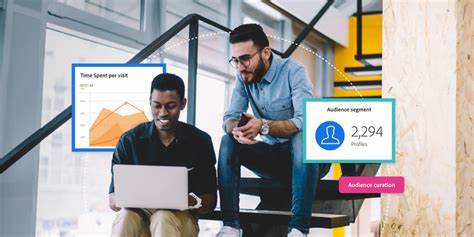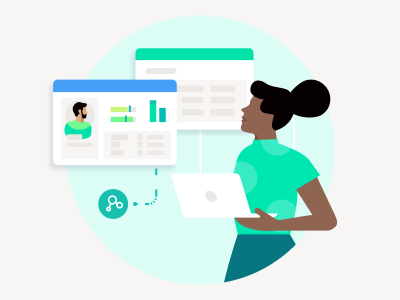Clean room and CDP: What’s the difference and why might you need both?
October 2, 2023Marketers know that in the constantly changing world of the consumer, having the right tech stack is key. As first-party data becomes synonymous with marketing success, many are turning to tech designed to capture, organize, understand and activate customer insights to enable audience targeting, customized experiences and better performance.
You might’ve heard of (or might even currently use) a data clean room or customer data platform (CDP) solution already. Both are integral tools when executing your first-party data strategy, but understanding which tool to use comes down to understanding their main functions. Do you know the differences between them? And more importantly, do you know why you might want both?
The differences
While clean room and CDP are often coupled together as similar products, there are some significant differences between them. CDPs and clean rooms can be great tools for brands to understand their customers, fill in information gaps, understand customer journeys, as well as prospect customers who are in-market for a brand’s products and services. At their most basic, both tools take data and organize it for brands to use. Epsilon’s Digital CDP can activate data to find the right people at the right time, and continually use that data to learn and measure strategies to strengthen over time. Something that no other CDP does.
Fundamentally, though, the two perform two different jobs. Before we dive into the similarities, let’s first understand them as separate solutions.
| Customer data platform | Clean room |
|
|
CDPs are used for known customer data collection and analysis. Brands that have first-party data might not have a complete (or accurate) view of their existing customers, which limits their ability to reach them online and offline. When brands use CDPs fueled with a strong identity solution, like Epsilon’s, they can start filling in those gaps, which gives the brand valuable and predictive signals. This in turn builds more relevant, personalized customer campaigns.
On the other hand, clean rooms create a safe, pseudonymized space to look for known and prospective customers. They are privacy-safe environments that use anonymized data to facilitate data sharing amongst multiple parties. This allows brands to drive prospect engagement based on consumer behaviors in the wild and use first-party and third-party data to build better unique audiences.
“CDPs are rooted in PII-based data, designed to improve marketing outcomes for known customers; whereas clean rooms are ID-based data that provide additional privacy for consumers and expand how brands can work with the data,” said Tyler McDaniel, Vice President of Product Management and Identity Solutions at Epsilon. “Additionally, brands that don’t have a rich first-party data foundation could use a clean room to their advantage for digital marketing or data sharing with partners.”
The similarities and synergies
Ultimately, both are trying to solve for the same thing: To create seamless customer experiences rooted in first-party data. CDPs do this for customers with name-based recognition and clean rooms do it in an ID-based environment. That allows for more exploration in the wild if a brand wants to do so.
Both support secure data collection. Both also allow for deeper insights on consumer behavior as it relates to a brand’s marketing strategy. But where these two really shine is when they’re used together.
Kelley Maves, Senior Vice President of Product and Data at Epsilon said the synergies between a clean room and a CDP boil down to three things:
- The ability to unlock data and technology for the entirety of the marketing organization
- The ability to run true personalized omnichannel marketing campaigns across owned and paid media
- The opportunity to holistically measure the impact of a marketing program
Some specific use cases might include:
- Identifying in-market shoppers: CDPs help keep your customers and find ones in-market. Why? The customer experience and path to purchase becomes much more visible when marketers can glean meaningful insights about real people who are really shopping for your real products. Using those insights in a clean room environment then powers better prospecting data and stronger lookalike audiences. Think about it like this: Once you know who you have, you can know who you want.
- Modeling and measurement: It seems like a no-brainer, but having better data leads to better measurement. Much like with acquisition, with a stronger cache of first-party data in a CDP, clean rooms do better clustering, segmentation and hypertargeting. And, with a CDP partner using reliable and long-lasting identity, brands get a persistent, unified view of individual people across devices and channels. Together that creates closed loop measurement with multi-touch attribution.
- Connect owned and paid channels: Ultimately, the biggest win when using a CDP and clean room together is the visibility into the customer experience and path to purchase. Consumers are constantly changing, and having the ability to integrate workflows for both current and prospective customers drives smarter marketing decisions with more personalized campaigns.
Which is right for me?
Maves said the decision to use a clean room over a CDP, or vice versa, comes down to data. While he says both products maximize the use cases a brand can bring to life, the question marketers need to ask themselves is, “How much data do I have?”
“If the brand has a broad amount of customer data that they’ve captured over the years as they build relationships with their customers, they may find the most value is with a CDP, so that they can maximize the usefulness of their first-party data assets,” he said. “In cases where the brand has a more limited set of customer data, a clean room that is enriched with additional prospecting IDs will likely be the most useful capability to bring immediate value to the brand through the use of licensed consumer attributes.”
Based on the scope of data a brand is working with, their use cases might change. Marketers need to understand their unique challenges and their desired outcomes, especially if they have a limited budget.
The Epsilon difference
Epsilon’s Digital CDP and clean room solutions are built using Epsilon PeopleCloud, meaning they seamlessly work together to drive bigger returns. With CORE ID at the center, we use identity resolution with unique IDs and proprietary attributes across our database of 250 million+ real people—all in a privacy-safe environment.
“Undoubtedly, CORE ID at the center of both solutions makes our offerings unique in the marketplace, giving marketers a unified view of an individual and enriching the marketers understand of individuals through Epsilon’s data,” McDaniel said. “Because we’ve designed these solutions to be fueled by first-party data, marketers will get the best activation performance and reduce media waste.”
With Epsilon, you’ll be able to build, enrich and extend your first-party data through our CDP solution, and target custom audiences with other first-party and third-party data insights using clean room.
Learn more about our Digital CDP and clean room solutions.


